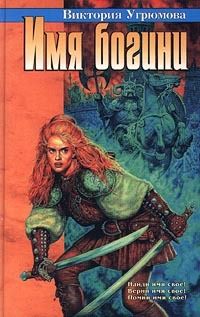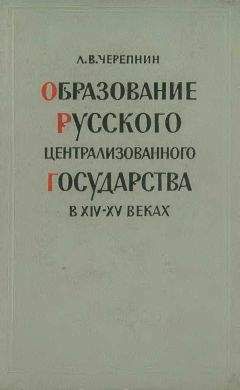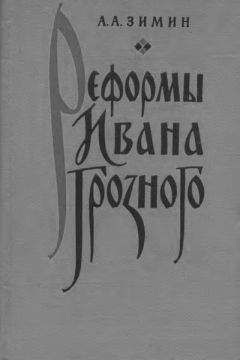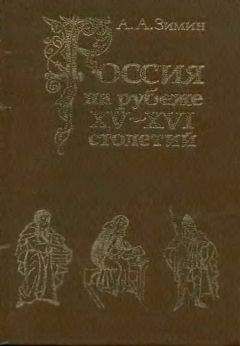Марк Льюис - Империи Древнего Китая. От Цинь к Хань. Великая смена династий
–“The Conduct of Government and the Issues at Stake, A.D.
57—167.” In The Cambridge History of China, Vol. 1: The Ch'in and Han Empires, 221 B.C.—A.D. 220. Cambridge: Cambridge University Press, 1986.
–Divination, Mythology and Monarchy in Han China. Cambridge:
Cambridge University Press, 1994.
–“The Orders of Aristocratic Ranks of Han China.” T'oung Pao
48:1-3 (1960): 97-174.
–Records of Han Administration. 2 vols. Cambridge: Cambridge
University Press, 1967.
–“The Structure and Practice of Government.” In The Cambridge
History of China, Vol. 1: The Ch'in and Han Empires, 221 B.C.—A.D. 220. Cambridge: Cambridge University Press, 1986.
–Ways to Paradise: The Chinese Quest for Immortality. London:
George Allen & Unwin, 1979.
Loewe, Michael, ed. The Cambridge History of China, Vol. 1: The Ch'in and Han Empires, 221 B.C.—A.D. 220. Cambridge: Cambridge University Press, 1986.
Lti, Jia. Xin у и jiaozhu (Annotated Commentary to the “New Words”). Annotated by Wang Liqi. Beijing: Zhonghua, 1986.
Lii shi chun qiu jiao shi (Annotated Elucidation of the “Springs and Autumns of Master Lii”). Annotated by Chen Qiyou. Shanghai: Xuelin, 1984.
Lun yu zheng yi (True Meaning of the “Analects”). In Xin bian zhu zi ji cheng (New Compilation of the Comprehensive Collection of the Various Masters), Vol. i. Taipei: Shijie, 1974.
Ma, Jixing. Mawangdui gu yi shu kaoshi (Critical Elucidation of the Ancient Medical Texts from Mawangdui). Changsha: Hunan Kexue Jishu, 1992.
Major, John. Heaven and Earth in Early Han Thought: Chapters Three, Four, and Five of the Huainanzi. Albany: State University of New York Press, 1993.
–“The Meaning of Hsing-te [Xingde].” In Chinese Ideas about
Nature and Society. Ed. Charles Le Blanc and Susan Blader. Hong Kong: Hong Kong University, 1987.
Makeham, John. Name and Actuality in Early Chinese Thought. Albany: State University of New York Press, 1994.
Mallory, J. P., and Victor Mair. The Tarim Mummies: Ancient China and the Mystery of the Earliest People from the West. London: Thames and Hudson: 2000.
Mao shi zheng yi (The Correct Meaning of the “Mao Commentary to the Odes”). In Shisan jing zhu shu (The Thirteen Classics with Commentaries and Subcommentaries), Vol. 2. Taipei: Yiwen, 1976.
McKnight, Brian. The Quality of Mercy: Amnesties and Traditional Chinese Justice. Honolulu: University of Hawaii Press, 1981.
McLeod, Katrina, and Robin Yates. “Forms of Ch’in Law.” Harvard Journal of Asiatic Studies 41:1 (1981): 111—163.
Mengzi zheng yi (True Meaning of the “Mencius”). In Xin bian zhu zi ji cheng (New Compilation of the Comprehensive Collection of the Various Masters), Vol. i. Taipei: Shijie, 1974.
Moffett, J. С. P. “Prediction in the Zuo-zhuan.” Ph.D. diss. Edinburgh University, 1991.
Mozi jian gu (Itemized Exegesis on the “Master Mo”). Annotated by Sun Yirang. In Xin bian zhu zi ji cheng (New Compilation of the Comprehensive Collection of the Various Masters), Vol. 6. Taipei: Shijie, 1974.
Nishijima, Sadao. “The Economic and Social History of Former Han.” In The Cambridge History of China, Vol. 1: The Ch4n and Han Empires, 221 B.C. – A.D. 220. Cambridge: Cambridge University Press, 1986.
Norman, Jerry. Chinese. Cambridge: Cambridge University Press, 1988.
Nylan, Michael. “The Chin-wen/Ku-wen Controversy in Han Times.” T’oung Pao 80 (1994): 82-144.
–“Confucian Piety and Individualism in Han China.” Journal of
the American Oriental Society 116:1 (1996): 1—27.
– 77ге five “Confucian” Classics. New Haven: Yale University
Press, 2001.
–“Han Classicists Writing in Dialogue about their Own Tradition.” Philosophy East and West 47:2 (April 1997): 133—188.
–“A Problematic Model: The Han ‘Orthodox Synthesis’ Then
and Now.” In Imagining Boundaries: Changing Confucian Doctrines, Texts, and Hermeneutics. Ed. Chow Kai-wing, Ng On-cho, and John B. Henderson. Albany: State University of New York Press, 1999.
Nylan, Michael, and Nathan Sivin. “The First Neo-Confucianism: An Introduction to Yang Hsiung’s ‘Canon of Supreme Mystery’ (Tai hsuan ching, 4 B.C.).” In Chinese Ideas about Nature and Society: Studies in Honour of Derk Bodde. Hong Kong: Hong Kong University Press, 1987.
Ong, Roberto K. “Image and Meaning: The Hermeneutics of Traditional Dream Interpretation.” In Psycho-Sinology: The Universe of Dreams in Chinese Culture. Ed. Carolyn T. Brown. Lanham, MD: University Press of America, 1988.
–Interpretation of Dreams in Ancient China. Bochum: Studi-
enverlag Brochmeyer, 1985.
Owen, Stephen. The Making of Early Chinese Classical Poetry. Cambridge: Harvard University Press, 2006.
–Remembrances: The Experience of the Past in Classical Literature.
Cambridge: Harvard University Press, 1986.
Pines, Yuri. “Changing Views of Tianxia in Pre-Imperial Discourse.” Oriens Extremus 41—42 (2002): 101—116.
–“Friends or Foes: Changing Concepts of Ruler-Minister Relations and the Notion of Royalty in Pre-Imperial China.” Monumenta Serica 50 (2002): 35-74.
–“The Question of Interpretation: Qin History in the Fight of
New Epigraphic Sources.” Early China (forthcoming).
Poo, Mu-Chou. “Ideas Concerning Death and Burial in Pre-Han China.” Asia Major, 3rd ser., 3:2 (1990): 25—62.
–jn Search of Personal Welfare: A View of Ancient Chinese Religion.
Albany: State University of New York Press, 1998.
Powers, Martin J. Art and Political Expression in Early China. New Haven: Yale University Press, 1991.
Qiu, Xigui. Chinese Writing. Tr. Gilbert Mattos and Jerry Norman. Berkeley: The Society for the Study of Early China, 2000.
Quan Hou Han wen (Complete Writings of the Eater Han). In Quan shang-gu Sandai Qin Han Sanguo Liuchao Wen (Complete Writings of High Antiquity, the Three Dynasties, Qin, Han, Three Kingdoms, and the Six Dynasties). Compiled by Yan Kejun (1762—1843 A.D.). Beijing: Zhonghua, 1958.
Queen, Sarah. From Chronicle to Canon: The Hermeneutics of the Spring and Autumn According to Tung Chung-shu. Cambridge: Cambridge University Press, 1996.
Qun shu zhi yao (Ordered Essentials of the Collected Texts). Si bu cong kan ed.
Ramsey, S. Robert. The Languages of China. Rep. ed. Princeton: Princeton University Press, 1989.
Rashke, Manfred B. “New Studies in Roman Commerce with the East.” In Aufstieg und Niedergang der Romischen Welt, Geshichte und Kultur Roms im Spiegel der Neuren Forschung II, 9. Ed. Hildegard Temporini and Wolfgang Haase. Berlin: Walter de Gruyter, 1978.
Rawson, Jessica. “Western Zhou Archaeology.” In The Cambridge History of Ancient China: From the Origins of Civilization to 221 B.C. Ed. Michael Loewe and Edward Shaughnessy. Cambridge: Cambridge University Press, 1999.
Rawson, Jessica, ed. Mysteries of Ancient China: New Discoveries from the Early Dynasties. London: British Museum Press, 1996.
Riegel, Jeffrey K. “Kou-mang and Ju-shou.” Cahiers d’Extrime-Asie: Special Issue, Taoist Studies II5 (1989—1990): 55—83.
Rouzer, Paul. Articulated Ladies: Gender and the Male Community in Early Chinese Texts. Cambridge: Harvard University Press, 2001.
Sage, Steven F. Ancient Sichuan and the Unification of China. Albany: State University of New York Press, 1992.
[Jiao zheng] Sanfu huang tu ([Annotated and Corrected] Yellow Map of the Capital Region). Taipei: Shijie, 1974.
San Guo zhi (Record of the Three Kingdoms). Beijing: Zhonghua, 1959.
Schelach, Gideon, and Yuri Pines. “Power, Identity and Ideology: Reflections on the Formation of the State of Qin.” In Asian Archaeology. Ed. Miriam Stark. London: Blackwell, 2005.
Scott, James. The Moral Economy of the Feasant. New Haven: Yale University Press, 1976.
Seidel, Anna. “Post-mortem Immortality—or the Taoist Resurrection of the Body.” In Gilgul: Essays on Transformation, Revolution and Ferma-nence in the History of Religions. Leiden: E. J. Brill, 1987.
–“Traces of Han Religion in Funeral Texts Found in Tombs.” in
Dokyo to shukyo bunka. Ed. Akizuki Kan’ei. Tokyo: Hirakawa, 1987.
Shang Jun shu zhu yi (Commentary and Vernacular Translation of the “Book of Lord Shang”). Annotated by Gao Heng. Beijing: Zhonghua, 1974.
Shang shu zheng yi (The Correct Meaning of the “Canon of Documents”). In Shisan jing zhu shu (The Thirteen Classics with Commentaries and Subcommentaries), Vol. 1. Taipei: Yiwen, 1976.
Shaughnessy, Edward L. “Military Histories of Early China: A Review Article.” Early China 21 (1996): 159-182.
Shi ji (Records of the Grand Historian/Astrologer). Beijing: Zhonghua, 1959.
Shi ming shu zheng bu (Corrected and Supplemented Subcommentary to “Explaining Names”). Annotated by Wang Xianqian. Shanghai: Guji, 1984.
Shui yuan (Garden of Persuasions). In Han Wei cong shu (Collecteana of the Han and Wei Dynasties), Vol. 1. Taipei: Xin Xing, 1977.
Shuihudi Qin mu zhu jian (Bamboo Strips from the Qin Tomb at Shui-hudi). Beijing: Wenwu, 1978.
Shuo wen jie zi zhu (Commentary on “Explanations of Simple and Compound Graphs”). Compiled by Xu Shen. Annotated by Duan Yucai. Taipei: Yiwen, 1974.
Sima fa zhi jie (Direct Explanations of the “Methods of the Commander”). Annotated by Liu Yin. In Ming ben wu jing qi sbu zhi jie (Ming Edition of the Direct Explanations of the Seven Military Classics), Vol. i. Taipei: Shi Di Jiaoyu, 1972.
Sivin, Nathan. Medicine, Philosophy and Religion in Ancient China: Researches and Reflections. Aldershot, Ashgate: Variorum Series, 1995.
Skinner, G. William. “Cities and the Hierarchy of Local Systems.” In The City in Late Imperial China. Ed. G. William Skinner. Stanford: Stanford University, 1977, pp. 275—351.
–“Marketing and Social Structures in Rural China,” 3 parts. Journal of Asian Studies 24.1 (1964): 3-44; 24.2 (1964): 195-228; 24.3 (1965): 363-399.
–“Regional Urbanization in Nineteenth-Century China.” In The
City in Late Imperial China. Ed. G. William Skinner. Stanford: Stanford University Press, 1977, pp. 211—252.
Sou shen ji (Record of Collected Spirits). Beijing: Zhonghua, 1979.
Steinhardt, Nancy S. Chinese Imperial City Planning. Honolulu: University of Hawaii Press, 1990.
Strickmann, Michel. “Dreamwork of Psycho-Sinologists: Doctors, Tao-ists, Monks.” In Psycho-Sinology: The Universe of Dreams in Chinese Culture. Ed. Carolyn T. Brown. Washington, D.C., Woodrow Wilson International Center for Scholars, 1988.
Sukhu, Gopal. “Monkeys, Shamans, Emperors, and Poets: The Chuci and Images of Chu during the Han Dynasty.” In Constance Cook and John Major, eds., Defining Chu. Honolulu: University of Hawaii Press, 1999.
[Shi yi jia zhu] Sunzi ([Ten Schools of Commentary on] Master Sun). Shanghai: Guji, 1978.
Taiping huan yu ji (Record of the World from the Taiping Reign Period). Hongxing Shan Fang, 1803.
Taiping yu lan ([Florilegium for] Imperial Inspection in the Taiping Reign Period). Taipei: Shangwu, 1935.
Teiser, Stephen. “Introduction: The Spirits of Chinese Religion.” In Religions of China in Practice. Ed. Donald S. Lopez, Jr. Princeton: Princeton University Press, 1996.
Thorp, Robert L. “Origins of Chinese Architectural Style: The Earliest Plans and Building Types.” Archives of Asian Art 36 (1983): 22—39.
Twitchett, Denis. “The T’ang Market System.” Asia Major 12:2 (1966): 202-248.
Van Zoeren, Steven. Poetry and Personality: Reading, Exegesis, and Hermeneutics in Traditional China. Stanford: Stanford University Press, 1991.
von Falkenhausen, Lothar. “Issues in Western Zhou Studies: A Review Article.” Early China 18 (1993): 145-171.
–“Mortuary Behavior in Pre-Imperial China: A Religious Interpretation.” In Religion in Ancient and Medieval China. Ed. John La-gerwey. Hong Kong: Chinese University of Hong Kong Press, 2004.
–“Sources of Taoism: Reflections on Archaeological Indicators
of Religious Change in Eastern Zhou China.” Taoist Resources 5:2 (1994): 1-12.
–Suspended Music: Chime-Bells in the Culture of Bronze Age China.
Berkeley: University of California Press, 1993.
von Glahn, Richard. The Sinister Way: The Divine and the Demonic in Chinese Religious Culture. Berkeley: University of California Press, 2004.
Wakefield, David. Fenjia: Household Division and Inheritance in Qing and Republican China. Honolulu: University of Hawaii Press, 1998.
Waldron, Arthur. The Great Wall of China: From History to Myth. Cambridge: Cambridge University Press, 1990.
Waley, Arthur, tr. The Nine Songs: A Study of Shamanism in Ancient China. London: George Allen & Unwin, 1955.
Wallacker, Benjamin E. “Han Confucianism and Confucius in Han.” In Ancient China: Studies in Early Civilization. Ed. David T. Roy and Tsien Tsuen– hsuin. Hong Kong: The Chinese University Press, 1978.
Wang, Chong. Tun heng ji jie (Collected Explanations of the Balanced Discourses). Annotated by Liu Pansui. Beijing: Guji, 1957.
Wang, Fu. Qian fu lun jian (Interpretation of the Discourses of the Hidden Man). Annotated by Wang Jipei. Beijing: Zhonghua, 1979.




